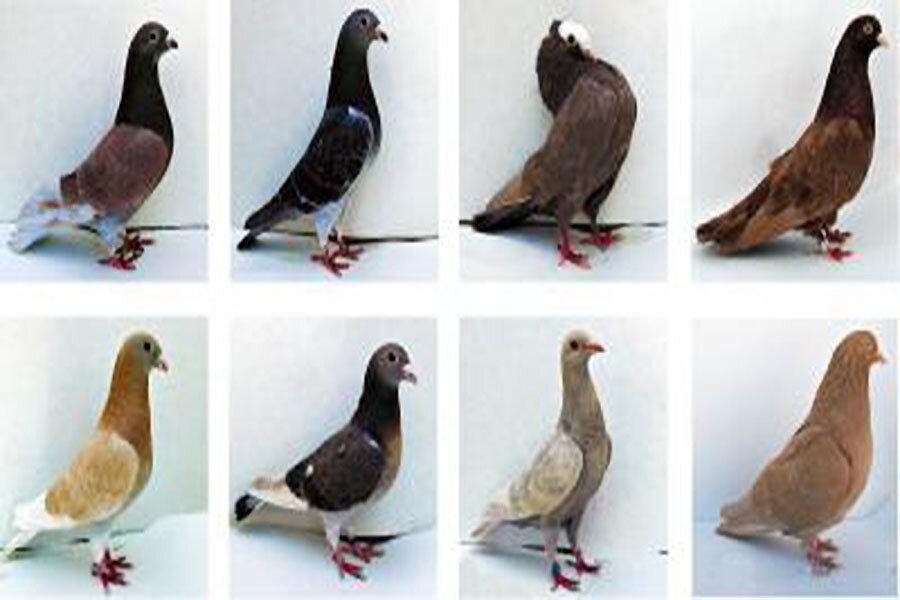What makes a pretty pigeon? Scientists identify genes for feather colors.
The next time you spot a red pigeon, don't worry. It probably wasn't spray-painted. It's in the bird's genes.
In a paper titled "Epistatic and Combinatorial Effects of Pigmentary Gene Mutations in the Domestic Pigeon" published this week in the journal Current Biology, a group of researchers from University of Utah say they have managed to crack the genetic code behind color variations among pigeons. The researchers identified mutations in three key genes – Tyrp1, Sox10, and Slc45a2 – that determine feather color in domestic rock pigeons.
"We were interested in understanding DNA level changes that give birth to specific traits among pigeons like, color of feathers," Michael Shapiro, associate professor of biology and senior author of the study told the Monitor.
The Tyrp1 gene produces an enzyme responsible for the synthesis of melanin and different forms of this gene that make pigeons blue-black (the grayish color of common city pigeons), ash-red, and brown, Dr. Shapiro said.
And mutations in another gene, named Sox10, make pigeons red irrespective of what other genes do. When Sox10, a recessive gene, mutates, it suppresses the Tyrp1 gene, resulting in a bird with a really rich red color, he adds.
"You drop the baton and the orchestra doesn't play, " he says. "That is exactly what mutation in Sox10 does."
Sox10 is an example of an epistatic gene, one that obscures the effects of another gene.
And different forms of a third gene, named Slc45a2, make the pigeons' colors appear either intense or washed out.
That same gene influences pigmentation of human skin, say scientists. For example, some mutations in Slc45a are associated with certain kinds of albinism.
“In humans, mutations of these genes often are considered ‘bad’ because they can cause albinism or make cells more susceptible to UV (ultraviolet sunlight) damage because the protective pigment is absent or low,” said Eric Domyan, a biology postdoctoral fellow at the university and first author of the study. “In pigeons, mutations of these same genes cause different feather colors, and to pigeon hobbyists that is a very good thing.”
"Color is one of the most important traits to breeders − it makes a pretty pigeon,” Shapiro said.
Records indicate that pigeons were domesticated 5,000 years ago, Shapiro says. And pigeon breeders have drawn on their experience and fiddled with pigeons of different colors to produce 350 distinct pigeon breeds, say scientists.
It is still unclear where these mutations came from – if they were already in the wild from the beginning or they came about as pigeons were eventually domesticated, Shapiro adds.






